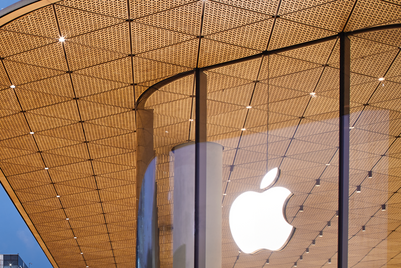
Certainly, the observers who expected China to be producing globally recognised brands have so far been disappointed. Li Ning showed some overseas aspirations by opening a store in Singapore, but otherwise Chinese companies have been more interested in buying foreign brands (Hummer was one such brand that fell into Chinese hands this year) or targeting the country’s rapidly growing lower tiers. In fact, Lenovo retreated from its global expansion to refocus efforts on China.
“If we were expecting this year to be the year of the Asian brand, we overestimated the readiness of Asian companies to exploit whatever opportunities the last year might have given them,” admits David Wolf, president and CEO of Wolf Group Asia.
Wolf says this is particularly true in China. “Chinese companies see the opportunity, but are realising they lack the internal skills and management acumen to make the leap from domestic to global brands. As such, we cannot look at this as a milestone, but as the first stage of a long process that will eventually produce a crop of Asian and Chinese brands.”
Charles Sampson, CEO, Saatchi & Saatchi says one of the painful truths is that Chinese products are not good enough yet. “If you think back to the global success of Japanese brands, they managed to overcome prejudice by making products that were unarguably better than their Western rivals.”
The year has not been a complete failure on this front. Tata looks set to revolutionise the world’s auto industry by producing the Nano, a cheap car for the emerging world. AirAsia has built a global presence via its long-haul AirAsia X business. And, of course, brands from established markets such as Japan and Taiwan remain strong internationally. Japan’s Uniqlo has become a global retail benchmark, and Taiwan’s Asus has changed the computer sector with the Eee PC.
Yet these remain few and far between. Edward Su, group MD, Shanghai and Eastern China, Euro RSCG, says a lot of brands from emerging Asia still face a psychological barrier when it comes to budgets. He points to the steps Korean brands have taken and argues that potential rivals in markets such as China are not ready to imitate them. “Brands like Samsung have a huge amount of marketing budget every year to establish its global brand positioning. That kind of budget is intimidating for other Asian brands.”
Joseph Baladi, CEO of BrandAsian, remains pessimistic about the opportunities for Asian brands on a global scale. “It’s arguably inappropriate to talk about Asian brands going to the next level - that is, international - when most fail to appeal to Asians within the region who continually demonstrate their preference for Western brands such as Apple’s iPhone, BMW or Nike,” he says.
Baladi points to managers obsessed with finding shortcuts and confusion over what branding means. “If I were to venture a guess I would estimate that over 90 per cent of decision-makers associate branding with advertising (or, worse, with logos),” he adds. “Critically important decisions are either ignored by managers or delegated to ad agency executives who are simply not equipped even to consider the issues, much less provide opinions that contribute to final decision-making.”
The rise of the Asian brand, then, is far from assured despite the region’s growing economic power. Plenty of hard work will be required in 2010 to make it happen.
Got a view?
Email [email protected]
This article was originally published in 17 December 2009 issue of Media.


+(900+x+600+px)+(3).png&h=334&w=500&q=100&v=20250320&c=1)
+(900+x+600+px).jpg&h=334&w=500&q=100&v=20250320&c=1)
.jpg&h=334&w=500&q=100&v=20250320&c=1)


.jpg&h=334&w=500&q=100&v=20250320&c=1)

+(900+x+600+px).png&h=334&w=500&q=100&v=20250320&c=1)

.jpg&h=334&w=500&q=100&v=20250320&c=1)

+(900+x+600+px)+(2).jpg&h=268&w=401&q=100&v=20250320&c=1)


+(900+x+600+px)+(3).jpg&h=268&w=401&q=100&v=20250320&c=1)

+(900+x+600+px).png&h=268&w=401&q=100&v=20250320&c=1)